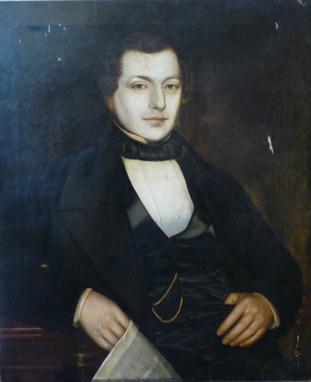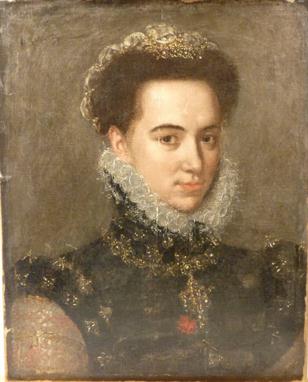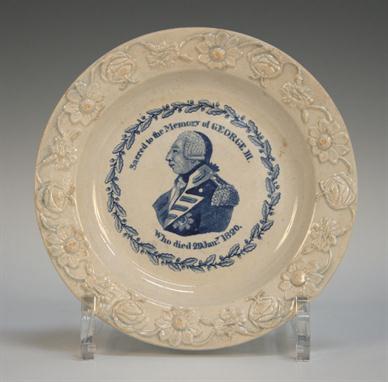Breguet (Abraham-Louis).- Salomons (Sir David Lionel) Breguet. (1747-1823), translated by Louis Desoutter, first French edition, portrait and plates, tissue guards, Cecil Clutton`s copy with his signature on front free endpaper and several letters etc. loosely inserted including Lilian Adam to Col.Quill, Clutton to Quill, Bruton to Quill etc., also photocopy of Allix`s list of analysis of watches in the English and French editions, some items in text marked ÒJÓ (i.e.Mayer watches in Jerusalem), original cloth, very slightly rubbed at edges, [Bromley 754; Tardy p.221], for the Author, 1923; and another on the Breguet centenary of 1923, 8vo (2)
283325 Preisdatenbank Los(e) gefunden, die Ihrer Suche entsprechen
283325 Lose gefunden, die zu Ihrer Suche passen. Abonnieren Sie die Preisdatenbank, um sofortigen Zugriff auf alle Dienstleistungen der Preisdatenbank zu haben.
Preisdatenbank abonnieren- Liste
- Galerie
-
283325 Los(e)/Seite
Rodanet (A.-H.) L`Horlogeries Astronomique et Civile...1886-1887, portrait, old cloth-backed boards, Paris, [1887] § Wins (Alphonse) L`Horloge a traves les âges, old cloth, Mons, 1924 § Planchon (Mathieu) L`Horloge: Son Histoire..., old ink inscription at head of title, light marginal water-staining, [Paris], 1923 § Philippe (Adrien) Les Montres sans Clef..., 3 folding plates at end, Geneva & Paris, 1863 § Beillard (Alfred) Recherches sur l`Horlogerie, ses Inventions et ses Celebrites, Paris, [1895], some with illustrations, the first two with bookplate of Joseph Sternfeld and rubbed, the rest modern cloth with original printed wrappers bound in (rubbed and stained, upper wrapper of Beillard slightly defective); and 7 others, French, 8vo & 4to (12)
An extremely rare Charles II travelling timepiece with silent-pull repeat, alarm and calendar. Robert Seignior, London circa 1685, the pierced silver case of later date. The 4 inch diameter circular movement with five finned and knopped pillars secured with blued steel latches to the tulip and foliate trail engraved gilded backplate applied with a scroll pierced and engraved balance cock, double-headed alarm hammer and central bell, the going train with chain fusee and verge escapement regulated by a sprung three-arm flat rimmed steel balance, the silent-pull repeat powered via a standing barrel mounted on the inside of the backplate and now sounding the hours only on the bell mounted to the rear of the movement, the alarm with further standing barrel mounted on the frontplate and crown wheel for the dumb bell type hammer sounding on the same bell, the 4.5 inch circular gilt brass dial with recessed silvered alarm disc, ringed winding hole and calendar aperture to the matted centre within silvered Roman numeral chapter ring with quarter hour inner track, stylised fleur-de-lys half hour markers, Arabic five minutes within the narrow outer track and signed Rob.t Seignior, Londini Fecit to lower edge, with pieced blued steel hands and herringbone engraved outer border, now in a silver case of later date finely pierced and chased with panels in the Renaissance style with scrolling acanthus incorporating figural terms and grotesque masks, putti and squirrels divided by repeating borders including a pair of profile portrait medallions, the hinged front cover with convex glass within foliate cast bezel, opposing hinged rear cover relief decorated with a bathing scene with an old man attended by semi-clad female figures within elaborated pierced double border, the top fitted with a ball pivoted cast suspension ring, (repeat work formerly sounding the quarters on a second bell), diameter 13cm (5ins) overall depth 10cm (4ins). Robert Seignio(u)r is recorded in Loomes, Brian The Early CLOCKMAKERS of Great Britain as apprenticed to John Nicasius gaining his Freedom of the Clockmakers` Company in 1667. He worked in Exchange Alley and was often at loggerheads with the Clockmakers` Company. In August 1674 he was appointed the King`s Clock and Watchmaker `without fee` until the death or surrender of office by Edward East, presumably to ensure succession of the role in the event of East`s demise. This appointment was never formally fulfilled as East outlived Seignior who died in 1687. The current lot is a particularly rare model as it is neither a table clock suitably adapted and scaled for travelling purposes, or a large clock-watch as the scale of the movement and details in construction and design are more akin to clockmaking practice rather than watchmaking. The design and layout of the repeat work closely resembles the earliest silent pull mechanisms first used by leading makers such as Joseph Knibb (See Allix, Charles and Harvey, Lawrence Hobson`s Choice pages 36-41 for closely related table clock repeat work). The engraved decoration to the backplate is again closely related to designs found on contemporary table clocks by the leading makers and can be directly compared to an example by Seignior dated to around 1680 illustrated in Dawson, Percy G., Drover, C.B. and Parkes, D.W. Early English Clocks Plate 512 (page 359). The design of repeat work, style of movement pillar, backcock, engraving and other features such as the distinctive `S` scroll shaped cocks for both the alarm going train crown wheel lower pivots identify the movement and dial of the current lot as unmistakenly English. However two similar travelling timepieces by the Hague maker Johannes Van Ceulen are known. The first example is illustrated in Bruton, Eric THE HISTORY OF CLOCKS AND WATCHES page 173, this appears to be an alarm timepiece only and is housed in a plain drum shaped case with a foliate pierced band towards the rear to allow the alarm to be heard. The case may give an impression of how the original for the current lot may have appeared (the present fine purpose-made elaborately chased and pierced silver case is probably Continental and of later date). The second example is illustrated in Bertele, Hans von MARINE & POCKET CHRONOMETERS and is described as a `ship`s cabin clock`. This second example is generally a more complex model as it appears to strike, have a calendar dial as well as an alarm, and is housed in a more elaborate silver case with pierced decoration to rear cover. The original client for the current lot must have been an extremely wealthy individual to be able to afford the luxury of such a fine timepiece exclusively for travelling purposes. Furthermore a subsequent owner must have also valued it highly enough to commission such a fine purpose-made silver case to be supplied to house the movement and dial.
A set of six mother-of-pearl buttons and a similar a pair of earclips, a mother-of-pearl star pendant, three mother-of-pearl spherical buttons, eleven various mother-of-pearl buttons, a set of six brass buttons decorated with musicians, three large and one small ceramic buttons, a rectangular brass photograph frame, a turquoise matrix two piece buckle, a gramophone needles tin, a Kigu powder compact, the cover with a needlework panel, and an oval portrait miniature of a lady.
A late 18th/early 19th Century circular tortoiseshell box, the lid inset with a painted panel of two doves perched on a rock beside a quiver, within piqué inlaid two colour gold floral decoration, diameter approx 5.3cm (minor faults), together with a glass cameo depicting a portrait of a lady within an oval red leather case, two unmounted cameos and a mourning brooch with hairwork decoration.
A Copeland Late Spode brown and green glazed teapot and cover, commemorating the 1897 Diamond Jubilee of Queen Victoria, sprigged in white with a portrait of the Queen and the Royal Coat of Arms, the cover with crown finial, brown printed and impressed factory marks to base (minor nicks to spout).
Two pearlware Princess Charlotte commemorative memoriam nursery plates, circa 1817, the first larger example printed in blue, the second printed in brown, each with a head and shoulders portrait above the inscription `The late and much lamented Princess Charlotte of Saxe Cobourg who departed this life Nov. 6th 1817`, each with a floral moulded rim, diameters approx 15.5cm and 13.7cm.
A pair of George III pearlware commemorative memoriam nursery plates, circa 1820, each printed in black with Pratt coloured enamels, the first with a portrait of the King within a laurel ring and the inscription `Sacred to the Memory of George III who died 29 Jan.Y 1820`, the second with a scene of George III presenting a bible to a child above an inscription, each within a floral moulded rim, diameter approx 13cm (minor haircrack to rim of second dish).
A George IV pearlware commemorative coronation vase, circa 1820, of flared circular form, printed in black to one side with a titled portrait bust of George IV above the inscription `Born Aug 12. 1762. proclaimed King of Engl. Jan. 31. 1820`, to the reverse a figure on horseback inscribed `The Champion of England at the Coronation of King George IV`, the rim and foot edged in black, height approx 10cm (minor restoration to rim).
A pearlware Queen Victoria and Prince Albert commemorative wedding nursery plate, circa 1840, printed in green to the centre with three quarter length portraits titled `Her Most Gracious Majesty Queen Victoria & Prince Albert`, within an animal moulded rim, diameter approx 15cm, together with another nursery plate, circa 1838, printed in pink with a three quarter length portrait of Queen Victoria, after Parris, above `VR` within a dense flowerhead moulded rim, diameter approx 15cm (fine haircrack to rim).
A pearlware Queen Victoria commemorative coronation and proclamation nursery plate, circa 1838, printed in blue with a head and shoulders portrait bust of the Queen beneath a crown within inscribed dates of her birth, proclamation and coronation, the panelled rim moulded with flowers, diameter approx 14cm.
A pearlware Queen Victoria commemorative proclamation nursery plate, circa 1837, printed in black with a half length portrait of the young Queen beneath a crown within the inscription `Victoria Regina, Born 25 of May 1819, Proclaimed 20 of June 1837`, the pink edged rim moulded with the alphabet, diameter approx 15.8cm (minor faults).
-
283325 Los(e)/Seite


























































